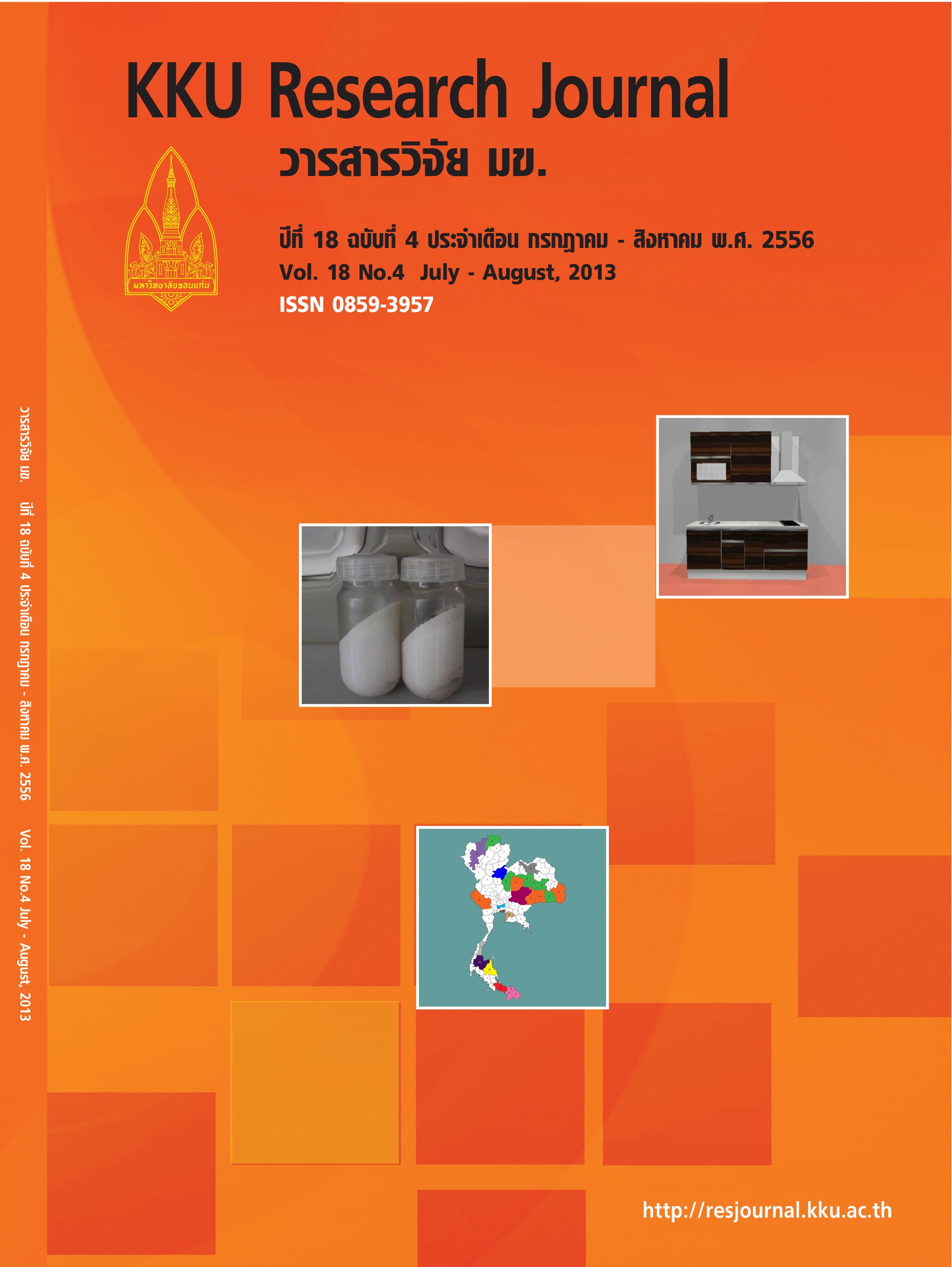Natural antibacterial activity of Thai curry paste in Thai red curry-water base (Kang-Pa) model on Salmonella enterica 4, 5, 12: i: - (human) and Salmonella enteric Enteritidis (human)
Main Article Content
Abstract
Natural antibacterial is now a very interesting food safety trend. The investigation on the food having antibacterial activity itself, as functional food, becomes more dynamic. Salmonella sp. is a food pathogen which has been reported its outbreaks frequently in variety of foods. Thai red curry (Kang-Pa) is a Thai cultural dish and become worldwide well-known menu. The Thai curry paste, Thai red curry main ingredients, compose of seven herbs including Capsicum annuum (Red chili), Cymbopogon citrates (Lemongrass), Alpinia galangal (Galangal), Allium ascalonicum L (Shallot), Allium sativum (Garlic), Citrus hystrix (kaffir lime), Cuminum cyminum (Cumin). This study aimed to investigate the potential of Thai curry paste in Thai red curry-water base (Kang-Pa) model as natural antibacterial agent against S. enterica 4, 5, 12: i - (human) US clone and S. enteric Enteritidis (Human). Thai curry paste in-vitro antibacterial activity was evaluated by standard plate count method on SS media every hour for 6 hrs at room temperature. Thai red curry was prepared according to Thai homemade authentic cooking method as it has been served in Thai cuisine. The result showed that the log CFU/ml of S. enterica 4, 5, 12: i - (human) US clone in Kang-Pa was significantly lower than in nutrient broth, as positive control, (P < 0.05) since 2nd - 6th hour: 2nd hr; 5.14?0.06 and 5.44?0.17, 3rdhr; 5.86?0.19 and 6.76?0.28, 4th; 5.85?0.16 and 6.97?0.6, 5th hr; 5.92?0.22 and 6.26?0.27 and 6th hr; 6.88?0.04 and 7.51?0.20 log CFU/ml, respectively. While the log CFU/ml of S. enteric Enteritidis in Kang-Pa was significant lower than those of positive control (NB) (P<0.05) only at 2nd and 3rd hour: 2nd hr: 5.705?0.199 and 6.370?0.085 log CFU/ml, at 3rd hr: 5.872?0.255 and 6.878?0.177 log CFU/ml, respectively. The t-test has been done by using SAS on log CFU/ml with P < 0.05. Thai curry paste in Kang-Pa model showed promising antibacterial activity against food-borne pathogenic bacteria, S. enterica 4, 5, 12: i - (human) and S. entericEnteritidis (human).
Article Details
How to Cite
Rattanakom, S., & Yasurin, P. (2017). Natural antibacterial activity of Thai curry paste in Thai red curry-water base (Kang-Pa) model on Salmonella enterica 4, 5, 12: i: - (human) and Salmonella enteric Enteritidis (human). Asia-Pacific Journal of Science and Technology, 18(4), 559–566. retrieved from https://so01.tci-thaijo.org/index.php/APST/article/view/82889
Section
Research Articles


